Chinese 豆渣 / 豆腐渣 Wade–Giles tou cha / toufu cha Kana おから | Hanyu Pinyin Kanji 雪花菜 / 御殻 Revised Hepburn okara | |
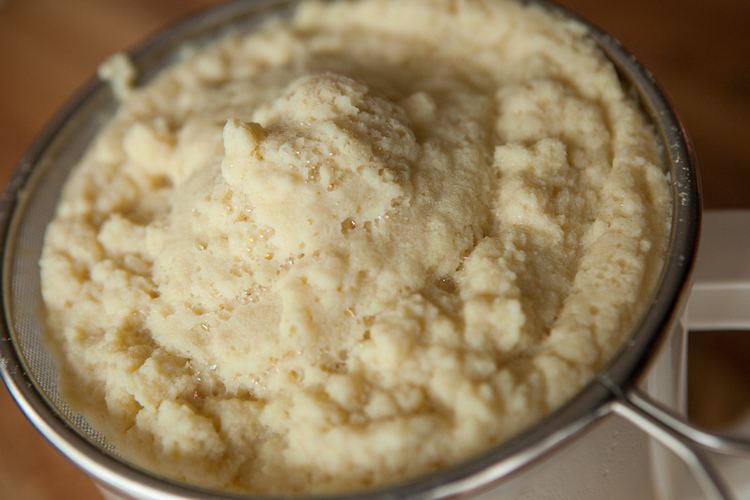 | ||
Similar Soy milk, Tofu, Soybean, Okra, Hijiki | ||
Okara, soy pulp, or tofu dregs is a pulp consisting of insoluble parts of the soybean which remains after pureed soybeans are filtered in the production of soy milk and tofu. It is generally white or yellowish in color. It is part of the traditional cuisines of Japan, Korea, and China, and since the 20th century has also been used in the vegetarian cuisines of Western nations.
Contents
- Production
- Composition
- Uses
- Human consumption
- Livestock consumption
- In pet food
- As fertilizer or compost
- WasteEnvironment
- References
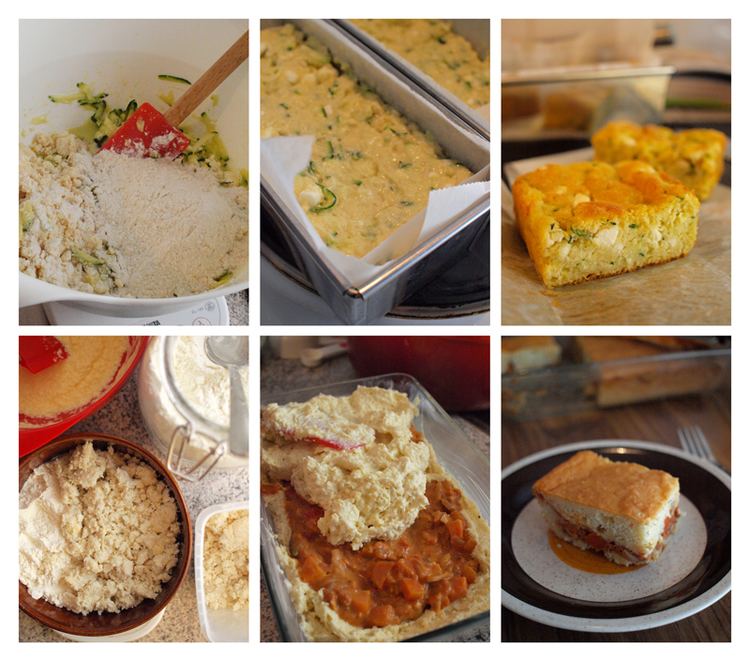
It is called dòuzhā or dòufuzhā in Chinese, okara in Japanese, and biji or kongbiji in Korean.
Okara is the oldest of three basic types of soy fiber. The other two are soy bran (finely ground soybean hulls), and soy cotyledon/isolate fiber (the fiber that remains after making isolated soy protein, also called "soy protein isolate").
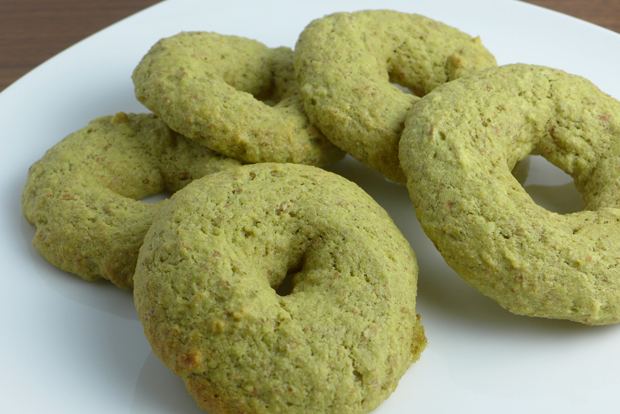
Production
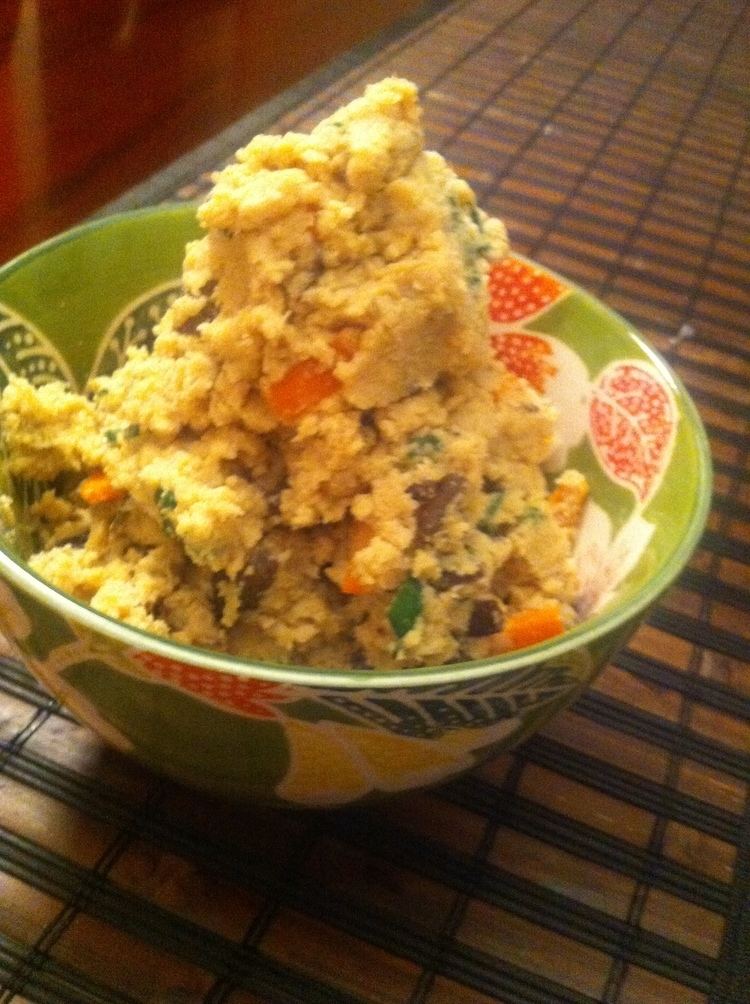
Okara is a food by-product from tofu and soy milk production. In 1983 it was estimated that the annual yield for okara in Japan was approximately 70,000 metric tons.

Due to its high moisture and nutrient content, okara is highly prone to putrefaction, and this has limited its commercial use.
Composition
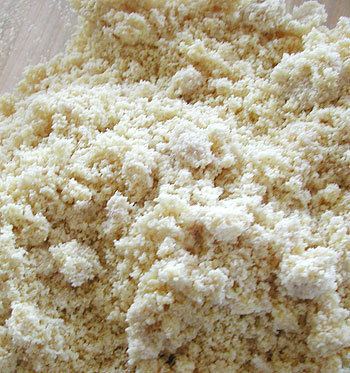
Okara that is firmly packed consists of 3.5 to 4.0% protein, 76 to 80% moisture and 20 to 24% of solids. When moisture free, the gritty okara contains 8 to 15% fats, 12 to 14.5% crude fiber and 24% protein, and contains 17% of the protein from the source soybeans. It also contains potassium, calcium, niacin. Most of the soybean isoflavones are left in okara, as well as vitamin B and the fat-soluble nutritional factors, which include soy lecithin, linoleic acid, linolenic acid, phytosterols, tocopherol, and vitamin D. Okara contains some antinutritional factors: trypsin inhibitors (mostly destroyed by cooking), saponins, and hemagglutinin, which cannot be easily digested. Fermentation (by proper species of bacteria) of okara is not only conducive to digestion and absorption of okara nutrients, but also further improves the nutritional value. It can eliminate the bean’s sense of smell, increase the amount of edible fiber, free amino acids, sugars, fatty acids, vitamin B12, vitamin B2, and flavoprotein.
Uses
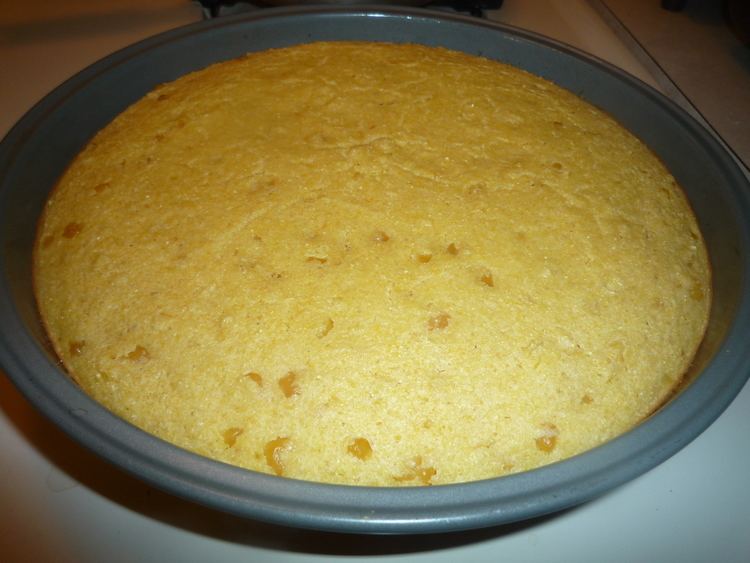
Most okara worldwide is used as feed for livestock - especially hogs and dairy cows. Most of the rest is used as a natural fertilizer or compost, which is fairly rich in nitrogen. A small amount is used in cookery.
Human consumption
While relatively flavourless when eaten on its own, it can be used in stews such as the Korean biji-jjigae or in porridges. It's also used as an addition to baked goods such as breads, cookies and muffins, and can serve to create a crumbly texture in these foods.
In Japan it is used in a side dish called unohana which consists of okara cooked with soy sauce, mirin, sliced carrots, burdock root and shiitake mushrooms.
Okara can be used to make tempeh, by fermenting with the fungus Rhizopus oligosporus, using a tempeh starter, or to make presscake tempehs that use ingredients such as brown rice, bulgur wheat, soybeans and other legume and grain combinations.
Okara is also eaten in the Shandong cuisine of eastern China by steaming a wet mixture of okara that has been formed into blocks of zha doufu also known as xiao doufu or cai doufu.
The product is sometimes used as an ingredient in vegetarian burger patties. Additional uses include processing into a granola product, as an ingredient in soysage and as an ingredient in pâtés.
Livestock consumption
Most okara is used as animal feed, especially for farms in vicinity of soy milk or tofu factories.
In pet food
The product is also used as an ingredient in pet foods.
As fertilizer or compost
Okara is sometimes spread on fields as a natural nitrogen fertilizer. It also adds tilth to the soil. Likewise, it can be added to compost to add organic nutrients and nitrogen.
Waste/Environment
When not considered foodstuff, it may be deemed soybean curd residue (SCR). Some 800,000 tons of soybean curd residue is disposed annually as tofu production byproducts, just in Japan. As mass waste, it is a potential environmental problem because it is highly susceptible to putrefaction. The protein in SCR is of better quality than from other soy products; for example, the protein efficiency ratio of SCR is 2.71 compared with 2.11 for soymilk, but the ratio of essential amino acids to total amino acids is similar to tofu and soymilk. Nevertheless, it remains a challenge to current processes to commercially extract the proteins and nutrients from SCR waste.
